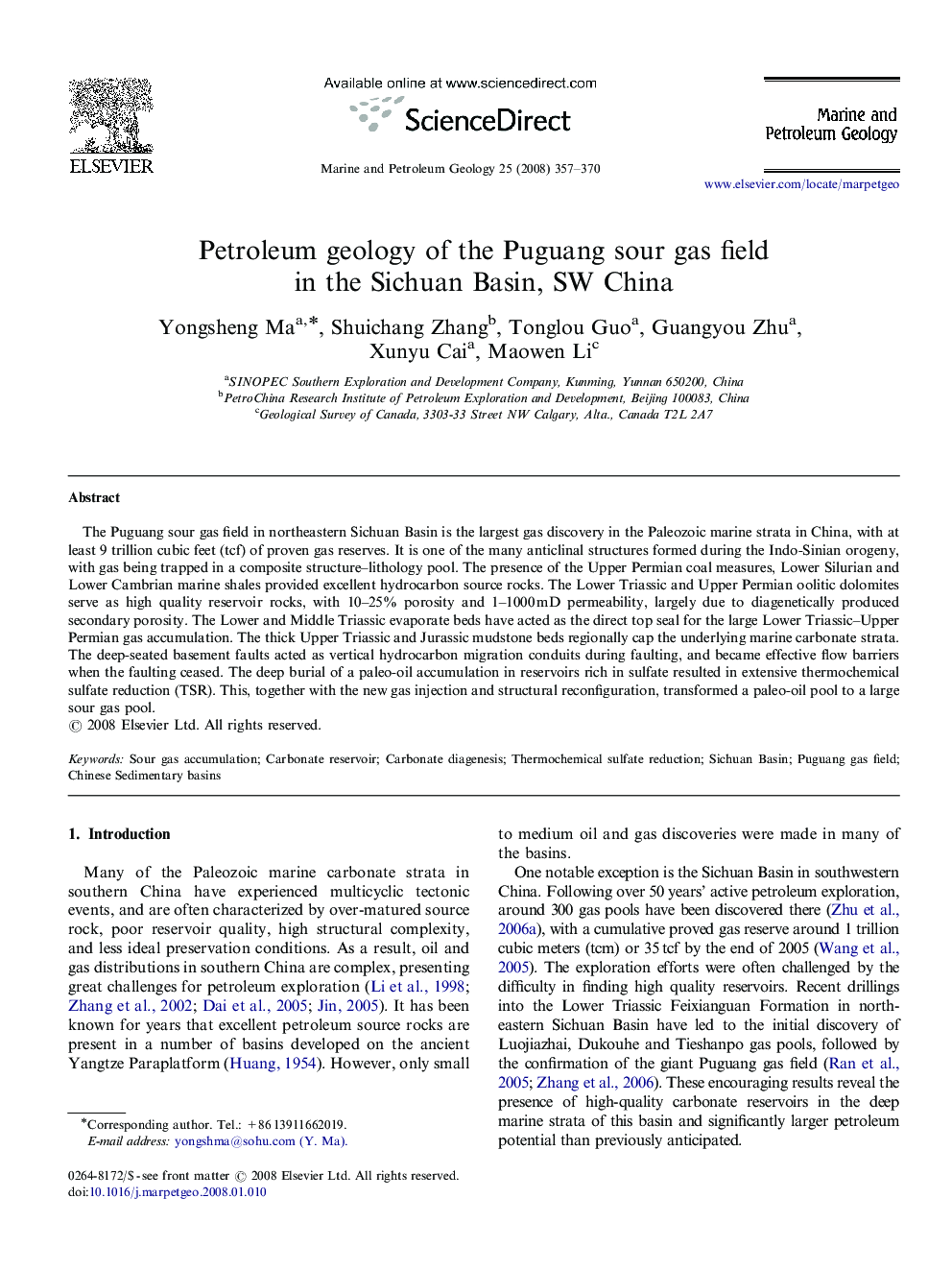| کد مقاله | کد نشریه | سال انتشار | مقاله انگلیسی | نسخه تمام متن |
|---|---|---|---|---|
| 4696636 | 1637186 | 2008 | 14 صفحه PDF | دانلود رایگان |

The Puguang sour gas field in northeastern Sichuan Basin is the largest gas discovery in the Paleozoic marine strata in China, with at least 9 trillion cubic feet (tcf) of proven gas reserves. It is one of the many anticlinal structures formed during the Indo-Sinian orogeny, with gas being trapped in a composite structure–lithology pool. The presence of the Upper Permian coal measures, Lower Silurian and Lower Cambrian marine shales provided excellent hydrocarbon source rocks. The Lower Triassic and Upper Permian oolitic dolomites serve as high quality reservoir rocks, with 10–25% porosity and 1–1000 mD permeability, largely due to diagenetically produced secondary porosity. The Lower and Middle Triassic evaporate beds have acted as the direct top seal for the large Lower Triassic–Upper Permian gas accumulation. The thick Upper Triassic and Jurassic mudstone beds regionally cap the underlying marine carbonate strata. The deep-seated basement faults acted as vertical hydrocarbon migration conduits during faulting, and became effective flow barriers when the faulting ceased. The deep burial of a paleo-oil accumulation in reservoirs rich in sulfate resulted in extensive thermochemical sulfate reduction (TSR). This, together with the new gas injection and structural reconfiguration, transformed a paleo-oil pool to a large sour gas pool.
Journal: Marine and Petroleum Geology - Volume 25, Issues 4–5, April–May 2008, Pages 357–370